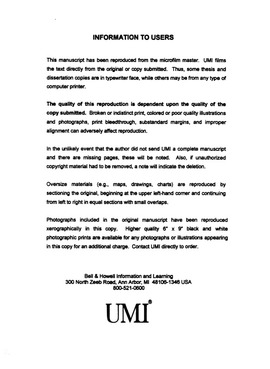| dc.contributor.advisor | Maiden, Jeffrey A., | en_US |
| dc.contributor.advisor | Zepeda, Sally J., | en_US |
| dc.contributor.author | Moore, George Wyatt. | en_US |
| dc.date.accessioned | 2013-08-16T12:30:56Z | |
| dc.date.available | 2013-08-16T12:30:56Z | |
| dc.date.issued | 2000 | en_US |
| dc.identifier.uri | https://hdl.handle.net/11244/5976 | |
| dc.description.abstract | The participants described several procedures and interactions they used to supervise and evaluate high school principals: (a) pre-conferences, (b) goal-setting, (c) site visits, (d) group meetings, (e) post-conferences, and (f) electronic mail (e-mail). Each of these procedures or interactions was designed to enhance communication among the high school principals and their supervisors. | en_US |
| dc.description.abstract | A pilot study---a content analysis---was conducted in which 14 districts submitted documents used to evaluate high school principals. Results of the pilot study pointed toward professional growth and development as a general purpose for evaluating principals. However, there was little, if any, language about supervisory or formative procedures included in the documents being studied. | en_US |
| dc.description.abstract | This study examined the perspectives of seven Oklahoma central office administrators about the supervision and evaluation they provided to their high school principals. Further examination was undertaken to describe---from the participants' perspectives---the relationship between supervision and evaluation of high school principals. The principal is responsible for supervising and evaluating teachers, and the research-based knowledge of teacher supervision and evaluation is widely available. However, the knowledge related to the supervision and evaluation of principals is not as well defined. | en_US |
| dc.description.abstract | The participants described the relationship between supervision and evaluation of high school principals as "hand-in-hand" or "like a glove and a hand". Supervision was a daily, ongoing process used to promote growth in principals. Supervision and evaluation procedures and interactions were similar across all the districts in this study. | en_US |
| dc.description.abstract | The participants in this study characterized supervision as an ongoing formative process through which they believed they helped their principals to grow and develop. Two different purposes for supervision emerged. In most states, statutes apply minimum criteria by which principals are to be evaluated. Participants appeared to equate evaluation with their specific evaluation tool or instrument. Typically, the supervisors and the high school principals reviewed the evaluation instrument during an end-of-year conference. | en_US |
| dc.format.extent | xi, 112 leaves ; | en_US |
| dc.subject | School superintendents Oklahoma. | en_US |
| dc.subject | High school principals. | en_US |
| dc.subject | Supervision of employees. | en_US |
| dc.subject | Education, Administration. | en_US |
| dc.subject | School management and organization Oklahoma. | en_US |
| dc.title | The supervision and evaluation of high school principals as described by central office administrators. | en_US |
| dc.type | Thesis | en_US |
| dc.thesis.degree | Ph.D. | en_US |
| dc.thesis.degreeDiscipline | Department of Educational Leadership and Policy Studies | en_US |
| dc.note | Chairpersons: Sally J. Zepeda; Jeffrey A. Maiden. | en_US |
| dc.note | Source: Dissertation Abstracts International, Volume: 61-05, Section: A, page: 1698. | en_US |
| ou.identifier | (UMI)AAI9972514 | en_US |
| ou.group | Jeannine Rainbolt College of Education::Department of Educational Leadership and Policy Studies | |
